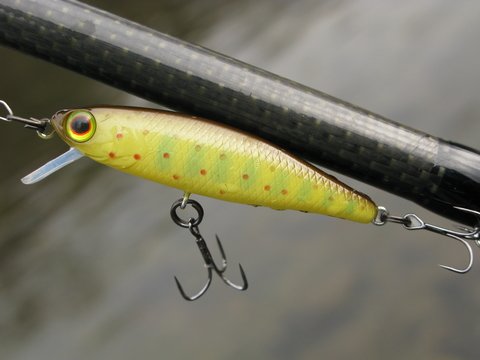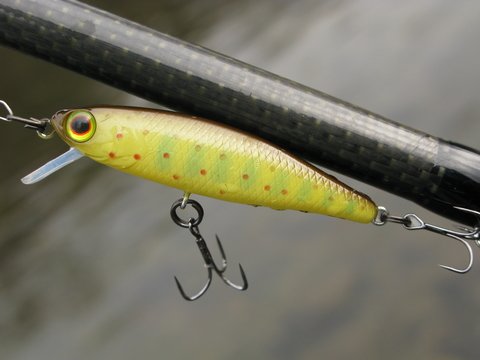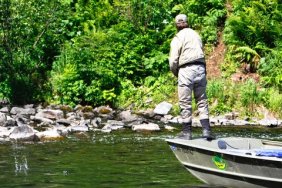
Experienced anglers know that when it comes to matching a fishing rod to a specific lure, not all rods are created equal. To get the most out of a given lure, you’ll want to be sure you have a rod that has the best action and length. To make sure you have the right rod for the task at hand, you can narrow your fishing techniques down to two categories: tight-line techniques and slack-line techniques.
Tight-line Techniques
These include baits that are meant to be retrieved quickly, which keeps the line tight, such as crankbaits, jerkbaits, spinnerbaits, and buzzbaits. Bass tend to hit these baits hard, which means a longer, moderate action rod with a soft tip is the way to go. This rod style allows fish to grab the bait without getting the lure yanked out of its mouth by the resistance of rod that’s too stiff; the rod’s flexible tip allows a fish to turn its head before setting the hook. Furthermore, you don’t need the power of a stiff rod to set the hook with tight-line baits, as they commonly feature treble hooks, which tend to ensure a better hook set. Anglers prefer rods with soft tips with these faster baits because the soft tip also allows the lure to move properly in the water. Finally, the flexibility a rod with a soft tip offers also means increased casting distance, which will allow deeper diving baits like plugs or crankbaits to reach their optimal depth during the retrieve.
Check out this pro angler show you his favorite rod for crankbait fishing:
Slack-line Techniques
Slack-line tactics include pitching and flipping baits such as plastic worms, tubes, and or jigs. With these techniques, a fast action rod with a stiff tip is ideal, as it best allows you to set the hook when using these baits. These lures also tend to feature a single, weedless hook, which means bass don’t typically strike them as hard as they do others. This makes setting the hook a bit more difficult than a crankbait, which is why a fast action rod with a stiff tip is so vital.
With plastic baits and jigs, the lure’s design doesn’t typically supply its own action, so a stiff rod tip grants you more control over how the bait moves in the water. It also gives you the ability to put more pressure on the fish when you need to muscle it out of thick weeds or lily pads. With slack-line techniques, rods in the six foot range provide better casting accuracy when you’re fishing in tight spots, and they’ll also cast lighter lures a lot better.
Spending some time on the water, where you can experiment with different rod and lure combinations, will enable you to fine-tune your rod selection and make each trip a rewarding one.








